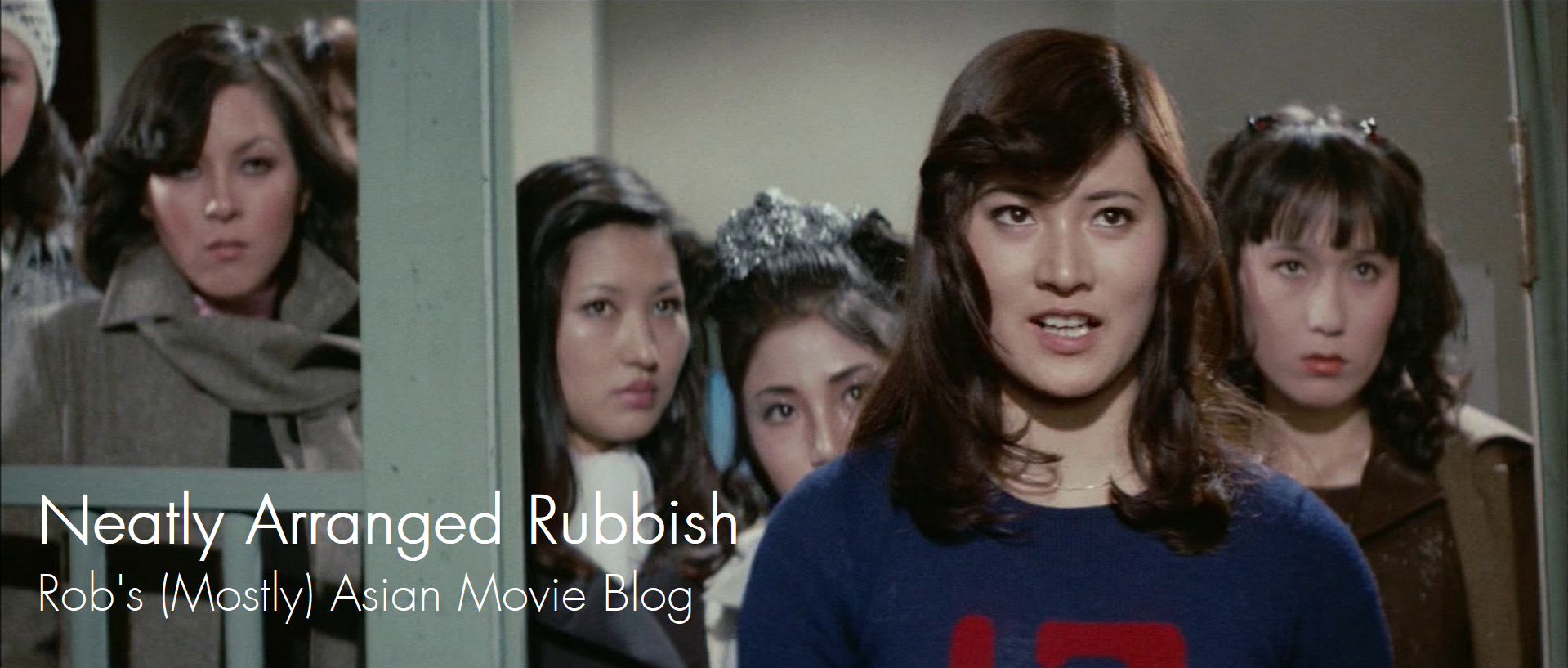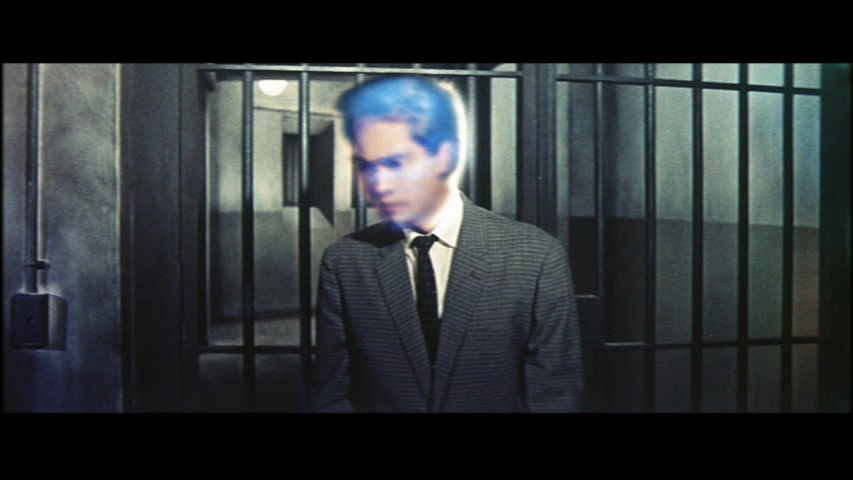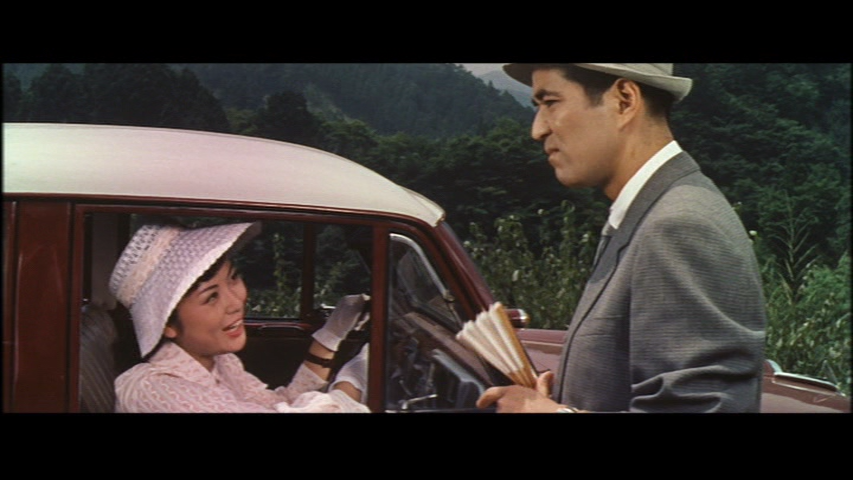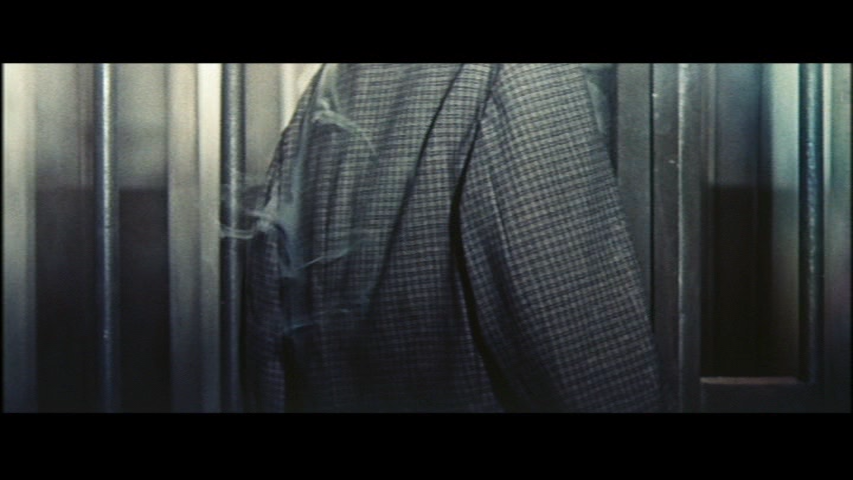Last Updated on October 6, 2020 by rob
Opening with a taut robbery sequence in which employees react with terror as doors and bank vaults seemingly open at will, a second robbery gets even stranger when a dead employee is found inside the locked but ransacked vault. With both keys in the hands of the authorities it’s a mystery as to how someone could have gotten into the vault without them. On the trail are Detective Okamoto (Tatsuya Mihashi) and his reporter-girlfriend Kyoko (Keiko Sata), whose combined investigations lead to a reclusive dancer named Fujichyio and her suitor Mizuno (Yoshio Tsuchiya), the victim of a scientific experiment gone wrong that’s left him with the ability to dissolve his whole body into gas!
This follow up to The H Man (1958) and Secret of the Telegian (1960) from director Ishiro Honda and studio Toho is a superior film in every respect. The script by Takeshi Kimura, who would go on to write the excellent Matango (1963), has real emotional clout courtesy of a Phantom of the Opera-ish tale of doomed love. Though imitative of American models (as so many of these early Japanese crime movies are) The Human Vapor is not only sprinkled with imaginative touches but displays at least some interest in its characters and their relationship with each other. For those who like the non-monster Japanese fantasy film of this era, The Human Vapor is something of a must see.
The first third of Honda’s movie establishes a real sense of mystery. Banks are raided, guards gunned down, yet no one sees anything. At the same time our heroes Detective Okamoto and crime reporter Kyoko have an amusingly competitive charm that makes their scenes together an easy watch. When the stolen money is used to pay the theatre costs for Fujichiyo’s upcoming performance Okamoto has her arrested. However under interrogation she refuses to identify the source of the money. With Fujichiyo in prison the second act really builds on this stalemate when the Gas Man, as he’s tagged by the papers, strolls into Kyoko’s newspaper office and announces his identity to all and sundry. It’s a genuine surprise. Why is he doing this?
Mizuno requests to be taken to the bank by the cops where the circumstances of the last robbery (the bank teller in his secure area of the vault) will be recreated. Surrounded by a dozen nervous trigger happy cops the unease is palpable as Mizuno is ordered to demonstrate how he did it and, boy, does he ever! This terrific sequence ends with Mizuno sternly warning the terrified cops to let Fujichyio go. With that we suddenly realise Mizuno’s reason for revealing himself. It was to prove Fujichyio, the woman he loves, innocent of the robberies. When the cops refuse to release the dancer from her cell Mizuno takes it upon himself to invade the police station and free her. In a striking scene Mizuno dissolves himself to slip between the bars of a police door. Here, over 30 years before Terminator 2 is exactly the same moment Robert Patrick performed when his T2 shape-shifter slipped between the cell doors of the medical facility in pursuit of Linda Hamilton!
Did The Human Vapor make a big impression on the young James Cameron? After watching this you have to wonder. But even offered her freedom Fujichyio refuses to leave. Frustrated, Mizuno frees all the other prisoners and with this act you can see the beginnings of the megalomania that afflicted Claude Rains’ character in The Invisible Man. It’s a resonant and foreshadowing moment for both characters. Mizuno out of control with his powers while Fujichyio stays put, granted the freedom to leave but her innate morality unable to let her accept an offer she knows to be wrong. When Mizuno then visits the newspaper office and explains how he gained his powers we get a classic mad scientist flashback – complete with Frankenstein-style laboratory – explaining how Mizuno unwisely volunteered to help one Doctor Sano whose tests on Mizuno had the unexpected side effect of dissolving his flesh!
The performances here are all fine with Yoshio Tsuchiya’s intent, sinister Mizuno effectively single-minded in his support of Fujichyio (I especially liked the delicate way he puts his hand over his heart before he transforms) and Yachigusa’s dancer suitably sincere. Tatsuya Mihashi and Keiko Sata get to have some fun with their characters and more importantly both couples convince us that there’s some genuine chemistry between them. That really pays off when we reach the explosive climax in which Fujichyio’s Kabuki recital at a local theatre prompts the cops to flood the theatre with gas in an attempt to kill Mizuno even as it puts the lives of both Fujichyio and Okamoto at risk. That Mizuno meets his fate won’t surprise anyone but the direction this comes from is completely unexpected and makes for a poignant end.
As you might expect from Ishiro Honda, The Human Vapor’s special effects work is simple and clever with the effect of Mizuno dissolving created by pouring dry ice through his suit as it eerily crumples. For shots of Mizuno in his gaseous state or strangling enemies animated effects and optical overlays are effectively employed. The film also utilises the old Invisible Man imagery of a suited body moving about with no visible extremities (including one absolute show-stopper of a moment that comes right at the end). With its modest interest in character and backed up by typically solid production values, competent direction from Honda and the bonus of a splendidly melodramatic Kunio Miyauchi score, The Human Vapor is a pretty satisfactory effort for genre fans of this period.




